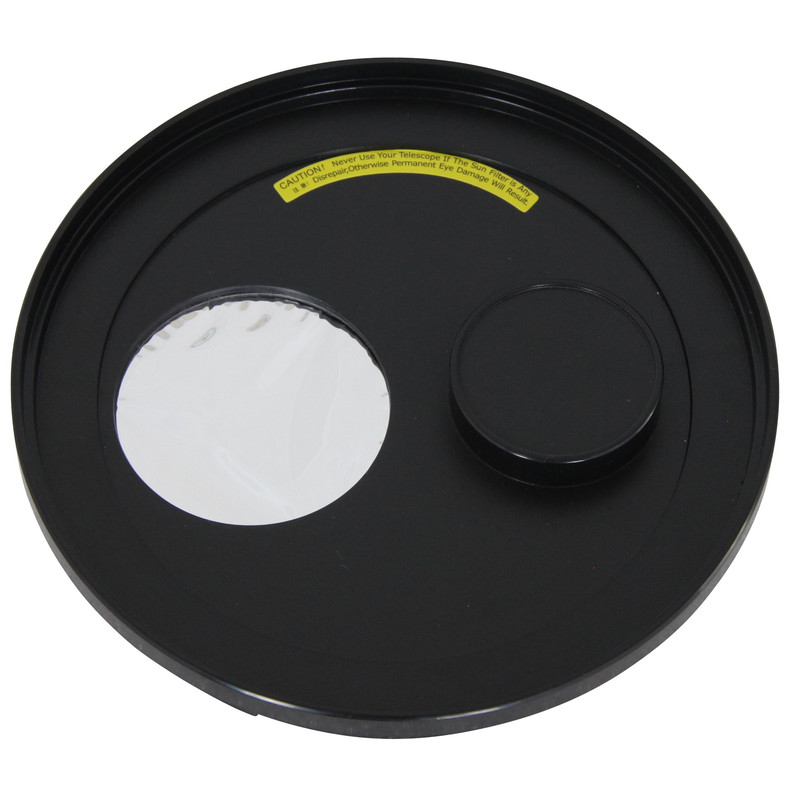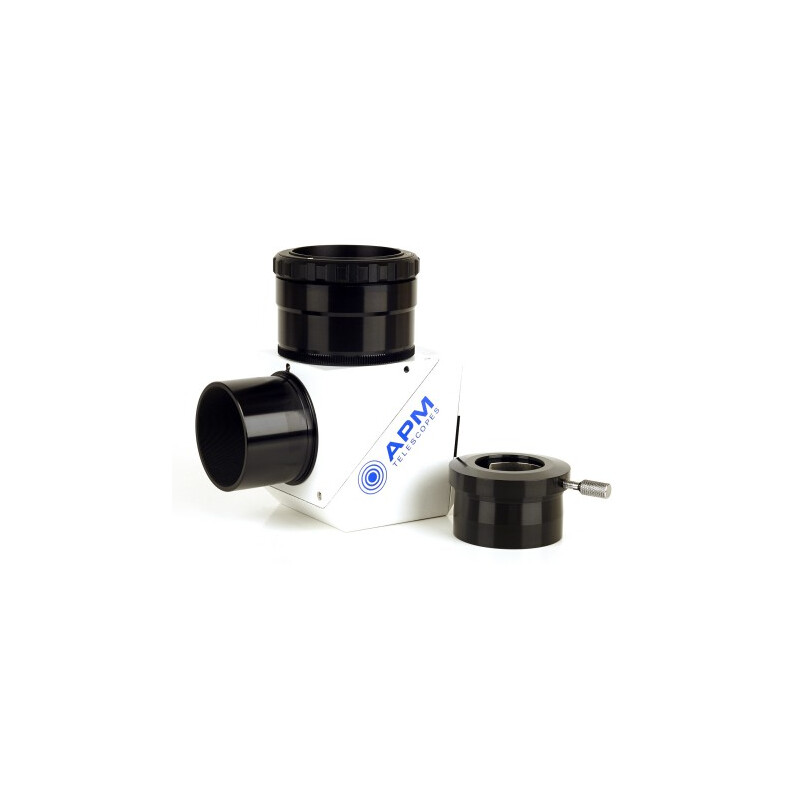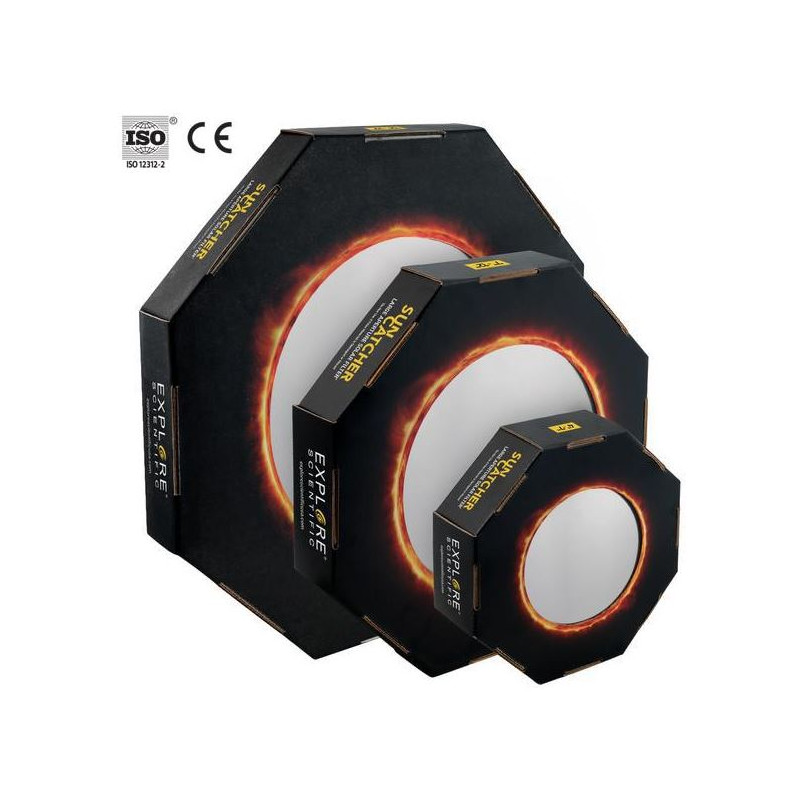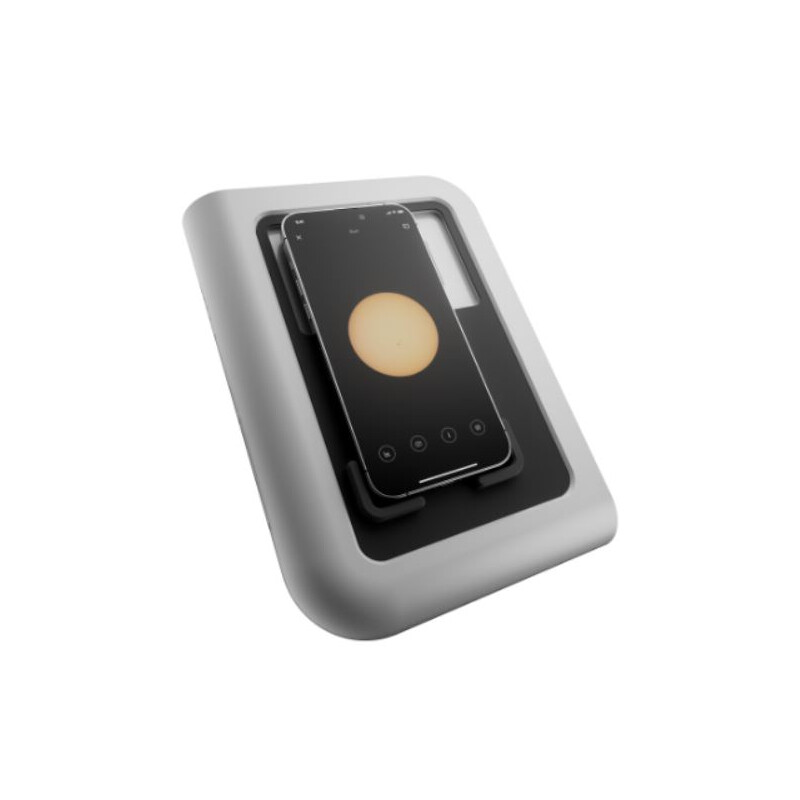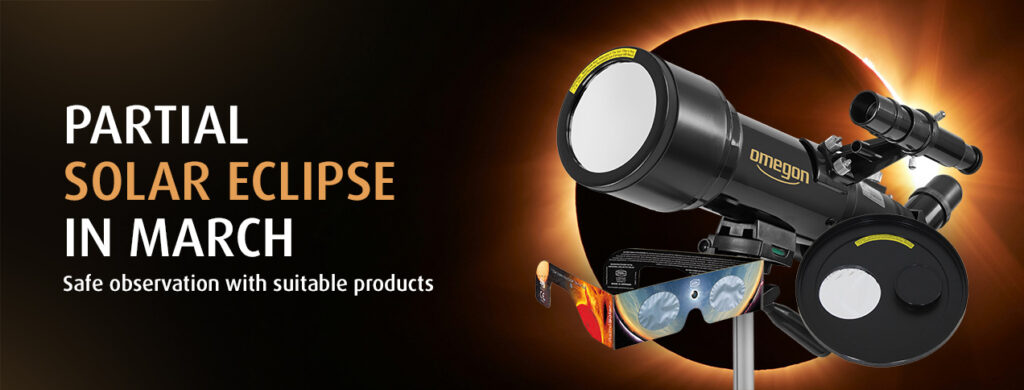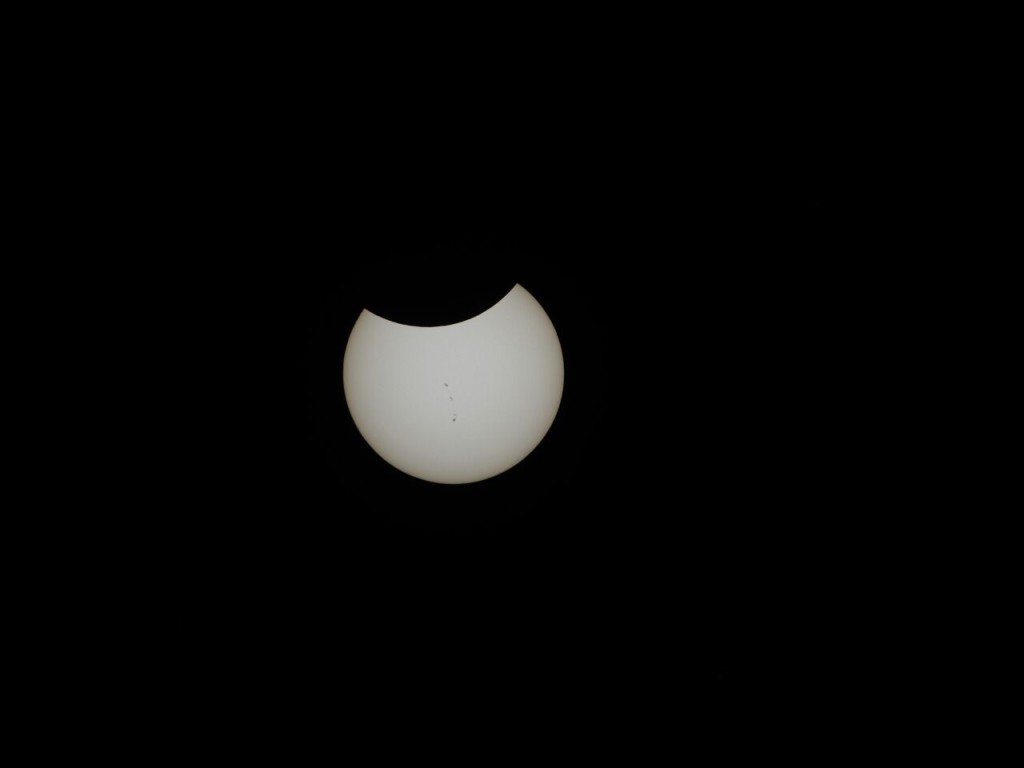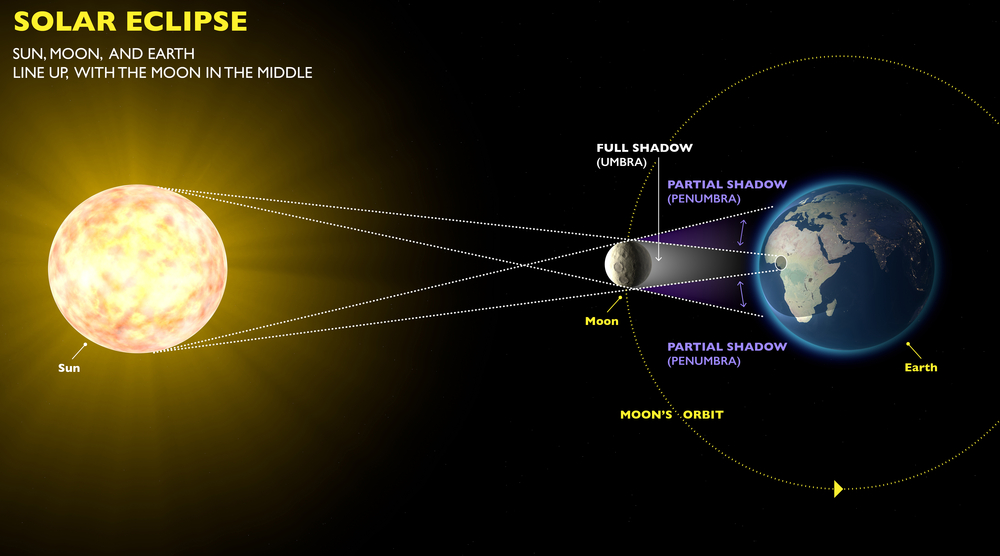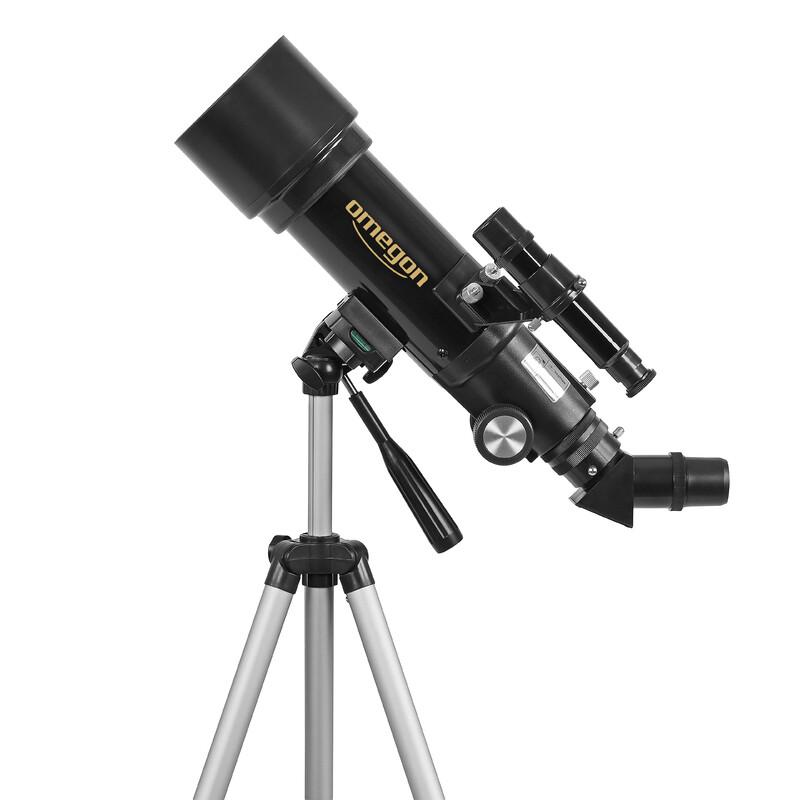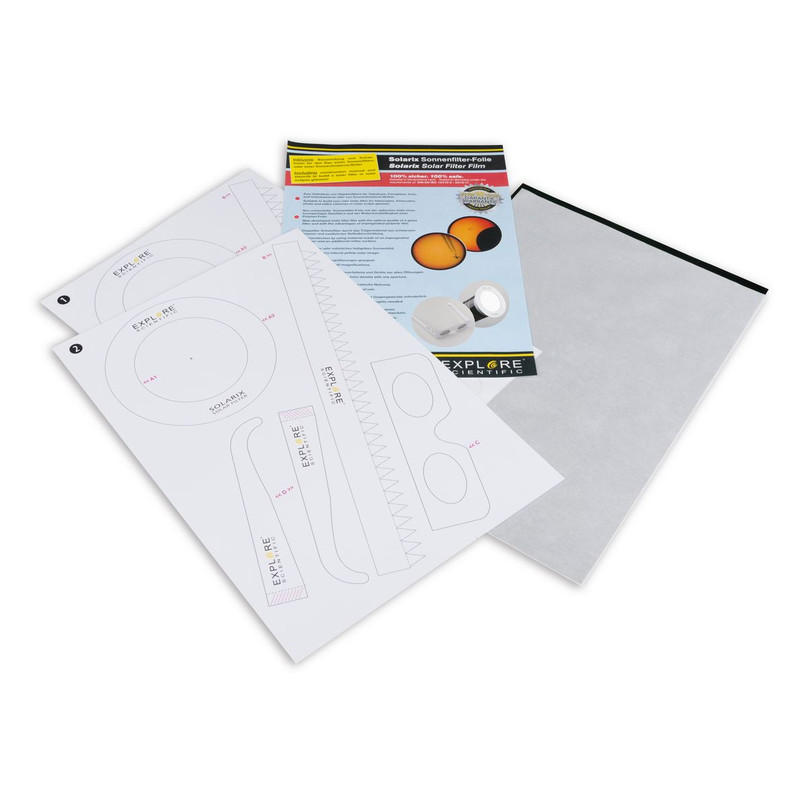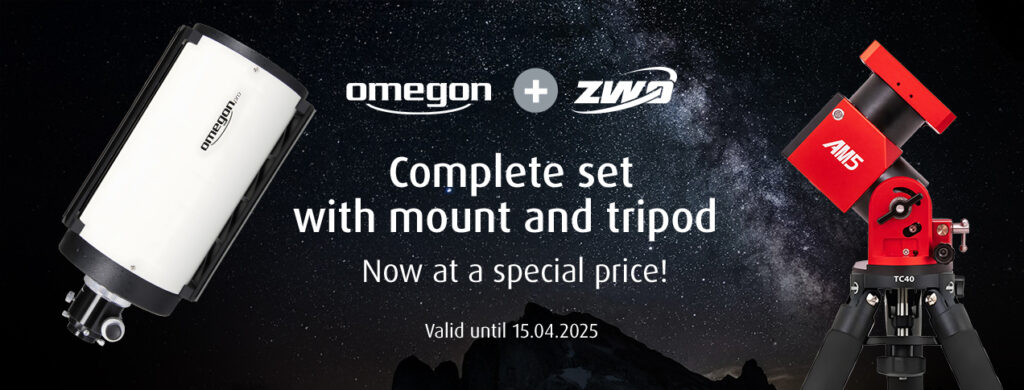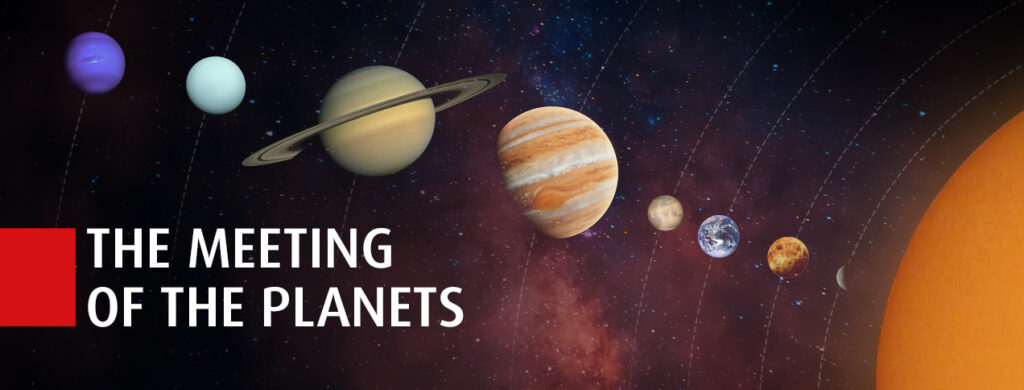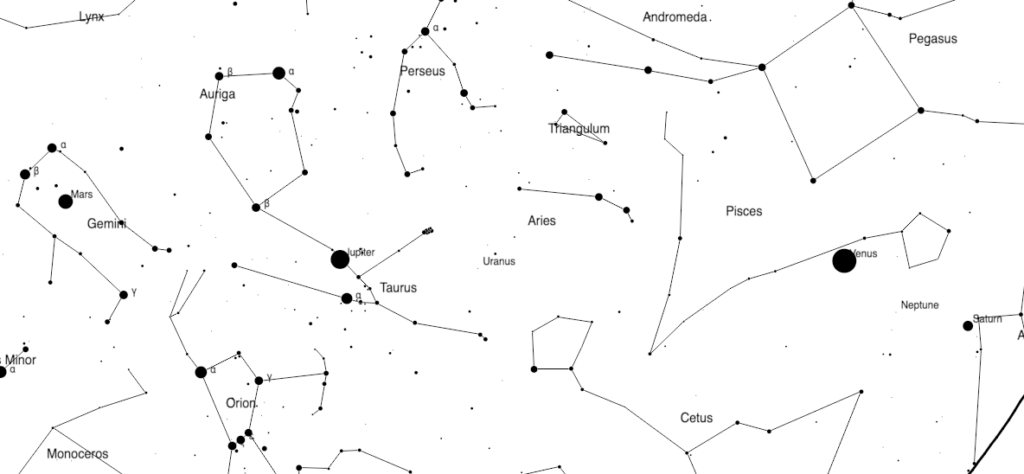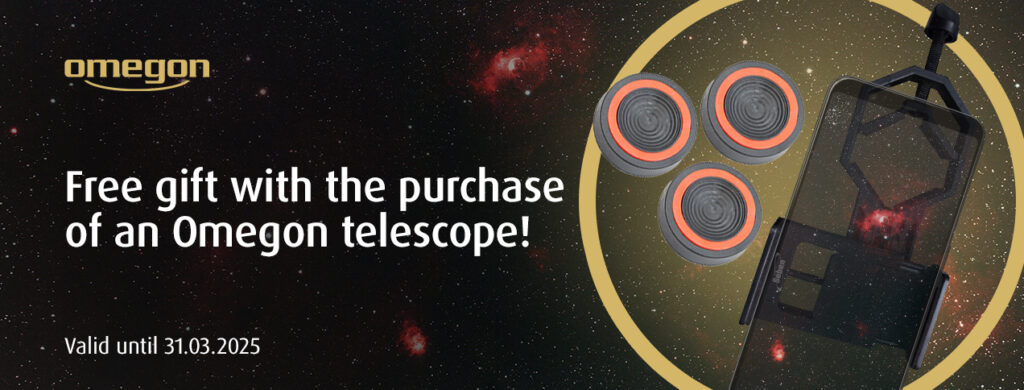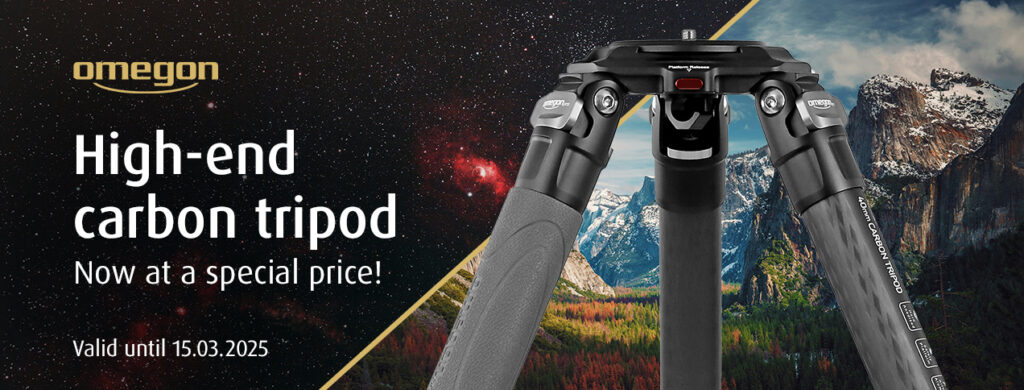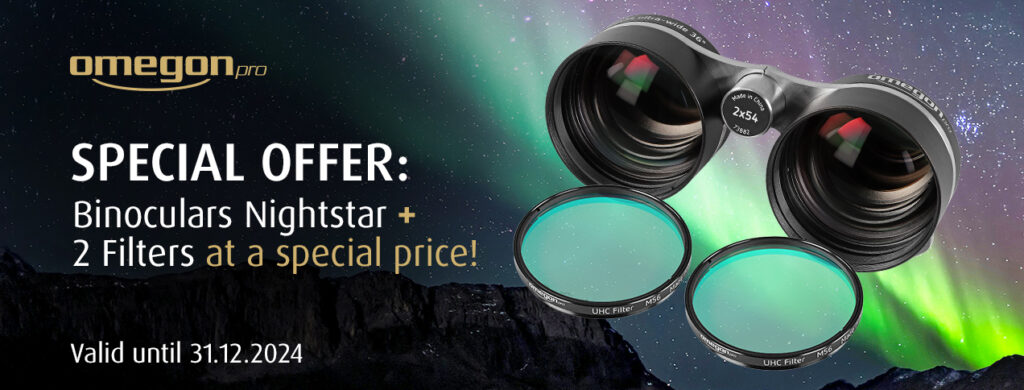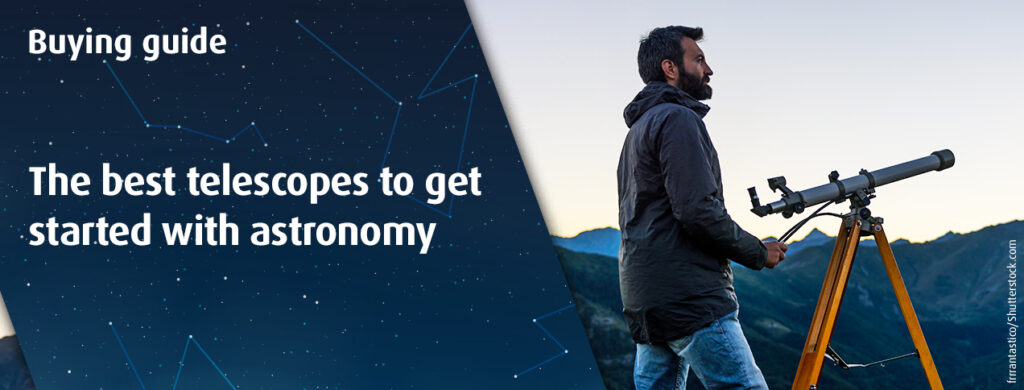The winter 2024/2025 has plenty to offer in the night sky. For example two planetary oppositions and an occultation of Saturn by the Moon. That’s by no means all, however.
What celestial events should you absolutely not miss? Find out about all of this and more in our new infographic, which highlights the most spectacular celestial phenomena of the winter season.
Happy stargazing!
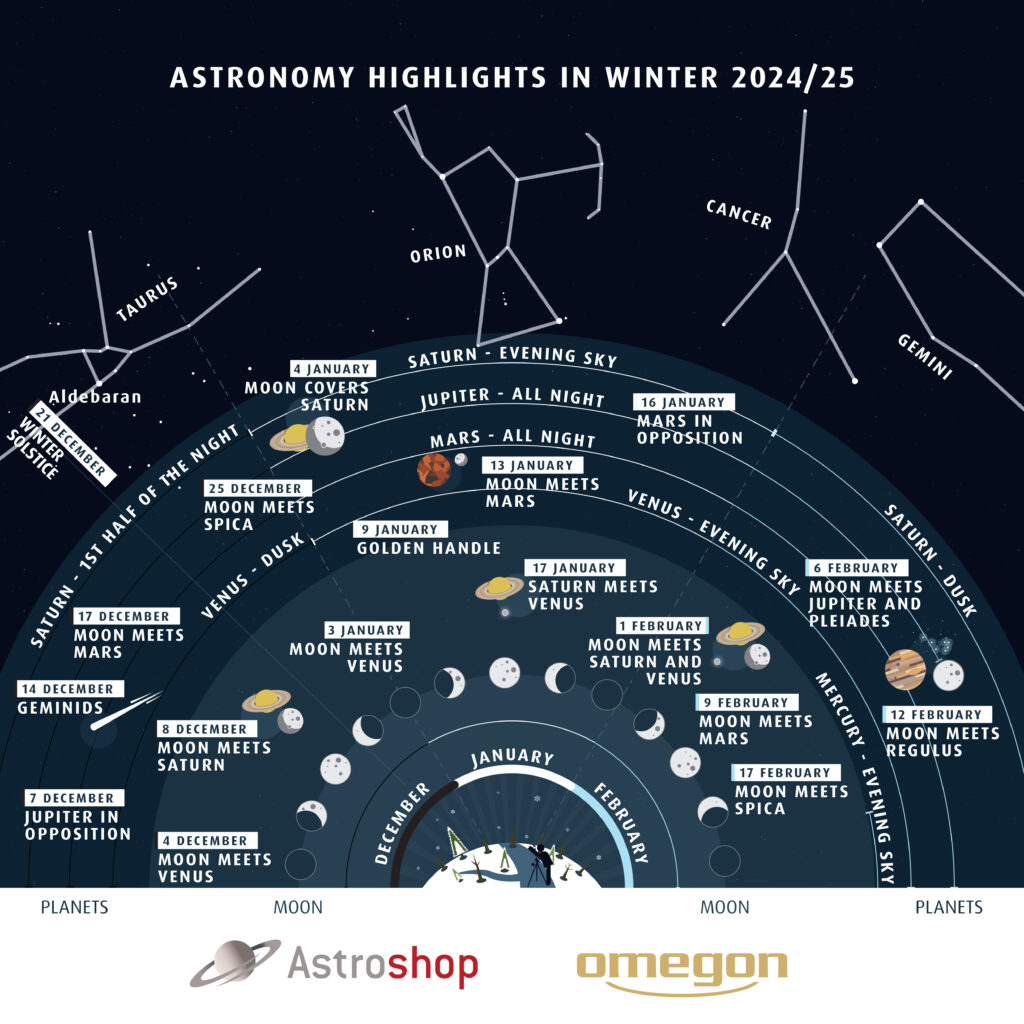
December
4 December: Moon meets Venus
In the evening of December 4, the sky offers a particularly brilliant spectacle. During twilight the crescent Moon and the radiant planet Venus come close together just above the Southwestern horizon. The Moon will appear as an ultra-thin crescent, as it will only be three days past New Moon. Venus will shine about 4.5 degrees above the Moon and is easily visible with the naked eye. This event provides a perfect opportunity for a picturesque photo, especially during the early stages of twilight.
7 December: Jupiter at Opposition
Starting in early December, Jupiter, the largest planet in our Solar System, will be in opposition to the Sun. This means it will be visible all night and can already be seen above the horizon during evening twilight. Jupiter is the brightest object in the night sky, besides our Moon and Venus. Compare its brightness to the brightest stars in the firmament: Jupiter outshines them all, making it a striking presence.
8 December: Moon meets Saturn
At nightfall of December 8 the Moon and Saturn will be high in the night sky. Both celestial bodies will be in the constellation of Aquarius, which is difficult to recognize due to its faint stars. Meanwhile, the bright planet Venus will glow in the Southwest.
14 December: Geminid Meteor Shower
During the night of December 14 the Geminids will reach their peak. This meteor shower appears to originate from the constellation of Gemini and is often regarded as the strongest one of the year. Its theoretical rate is around 120 meteors per hour, but in reality, fewer are visible. This year the full Moon will interfere, making only the brightest meteors visible. Still, it’s worth heading outside for the chance to catch a particularly bright meteor.
17 December: Moon meets Mars
On December 17 the waning Moon and the planet Mars will be about 5 degrees apart. The red planet and the faintly shimmering crescent Moon will create a fascinating sight together.
25 December: Moon meets Spica
In the early morning hours of December 25 the Moon will approach Spica, the brightest star in the constellation of Virgo. This constellation is typical for the spring sky and Spica will rise higher as winter progresses. A great reason to set your alarm a little earlier!
January
3 January: Moon meets Venus
In the early evening hours of January 3 we’ll witness another encounter between the thin crescent Moon and the planet Venus. Especially during twilight this celestial event emits sheer beauty. Those who look closely may also spot Saturn, which shines much fainter and lies above Venus.
4 January: Moon occults Saturn
On January 4 we’re in for a rare celestial event: The Moon will occult Saturn. At 6:34 PM CET Saturn will disappear behind the dark side of the Moon, as if someone has switched off a light. At 7:36 PM Saturn will re-appear on the other side of the Moon. Start observing a few minutes before Saturn disappears to fully experience the event. A must-see for Astronomy enthusiasts!
9 January: Golden Handle
On January 9 a special light phenomenon will appear on the Moon: The so-called “Golden Handle.” This isn’t an astronaut’s artifact, but a fascinating play of light. The phenomenon occurs when the Moon is 83% illuminated, about 10 days after New Moon. The rising Sun illuminates the mountain peaks of the Jura range, while the valley remains in darkness, creating the impression of a golden handle. Starting at around 5 PM CET it’s worth taking a look through a telescope to enjoy this unique spectacle.
13 January: Moon meets Mars
In the evening of January 13 the Moon and Mars will meet, shining together in the constellation of Gemini. The evening is a good time for an observation, but there’s an even better time: During the early morning hours. Why observe in the morning? Well, during the night the Moon will creep closer to Mars, approaching the red planet within just 0.2 degrees.
16 January: Mars at Opposition
On January 16 the planet Mars will be in opposition and visible high in the night sky all night long. The planet’s diameter will be about 14.5 arcseconds. Along with the bright stars Castor and Pollux in the constellation of Gemini Mars will form a prominent triangle. At a distance of 96 million kilometers, Mars is only five light minutes away from Earth – a great opportunity to observe the red planet through a telescope.
17 January: Saturn meets Venus
In the evening of January 17 Saturn and Venus will stand within about 2 degrees of each other. Not only is this constellation a visual delight, but it also allows for an easy comparison of the two planets’ brightness. Venus will shine 194 times brighter than Saturn. A wonderful reason to observe both planets during twilight.
February
1 February: Moon meets Saturn and Venus
This evening the slender waxing crescent Moon will slip between the planets Saturn and Venus. A striking sight – especially beautiful during twilight. This celestial event offers an excellent opportunity for a stunning photo: The crescent Moon framed by two planets – a true feast for the eyes.
6 February: Moon meets Jupiter and the Pleiades
On February 6, the Moon will move along the ecliptic and reach the famous open star cluster, the Pleiades. Also known as the “Seven Sisters,” the star cluster lies in the constellation Taurus and, together with the bright planet Jupiter, creates a magnificent celestial scene. As the Moon travels, it regularly passes through the so-called “Golden Gate of the Ecliptic,” whose pillars are the Pleiades and the Hyades star cluster. A stunning sight that showcases the Moon’s journey among stars and planets.
9 February: Moon meets Mars
On February 9 the Moon and the red planet Mars will come close again, just shy by 0.5 degrees. Visible in the evening hours, this close pairing is truly impressive. Make sure to take advantage of this opportunity, as the distance between the two is incredibly small.
12 February: Moon meets Regulus
On February 12 the Moon will pass through the constellation of Leo and approach Regulus, the brightest star in Leo. Regulus is one of the brightest stars in the winter sky and, together with the Moon, gives us a preview of the spring constellations to come. Even though it might still be cold, the sky is hinting that spring is not far away.
17 February: Moon meets Spica
On February 17 the Moon will approach Spica, the brightest star in Virgo. Spica is one of the brightest spring stars and will still be fairly low on the horizon during the night of February 17. However as the night progresses, Spica will rise higher, making it an excellent opportunity to observe it alongside the glowing crescent Moon. A lovely chance to re-acquaint yourself with the spring constellations.
